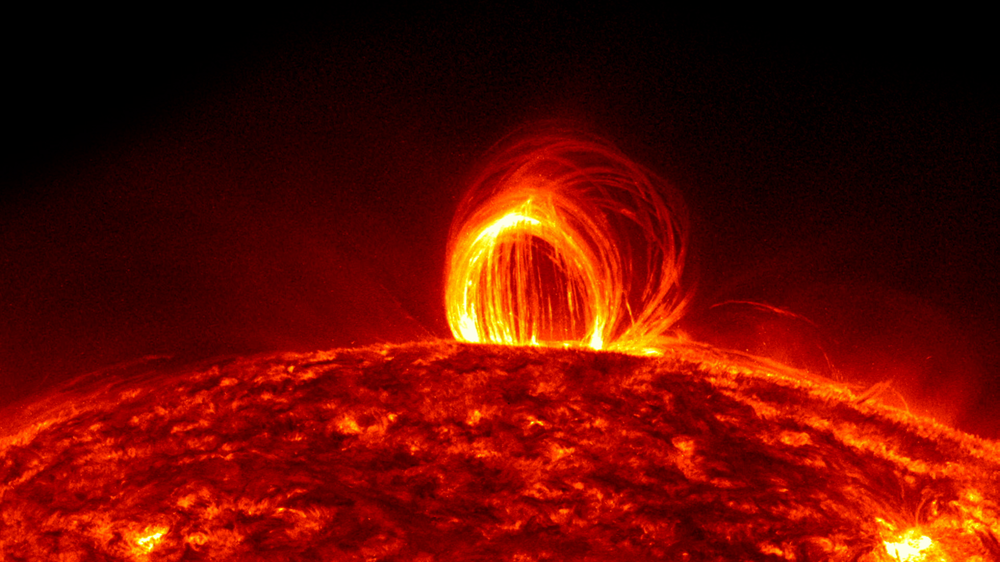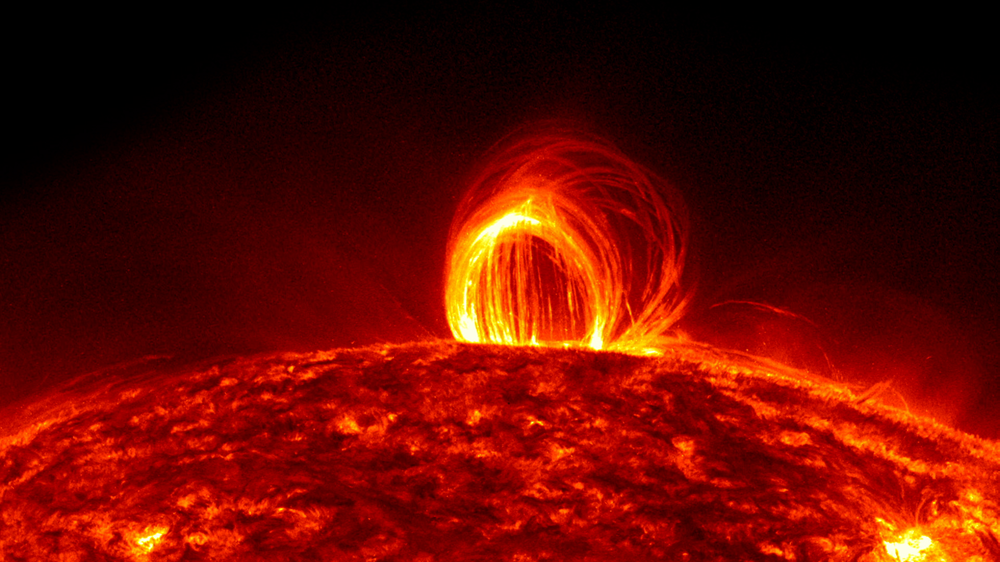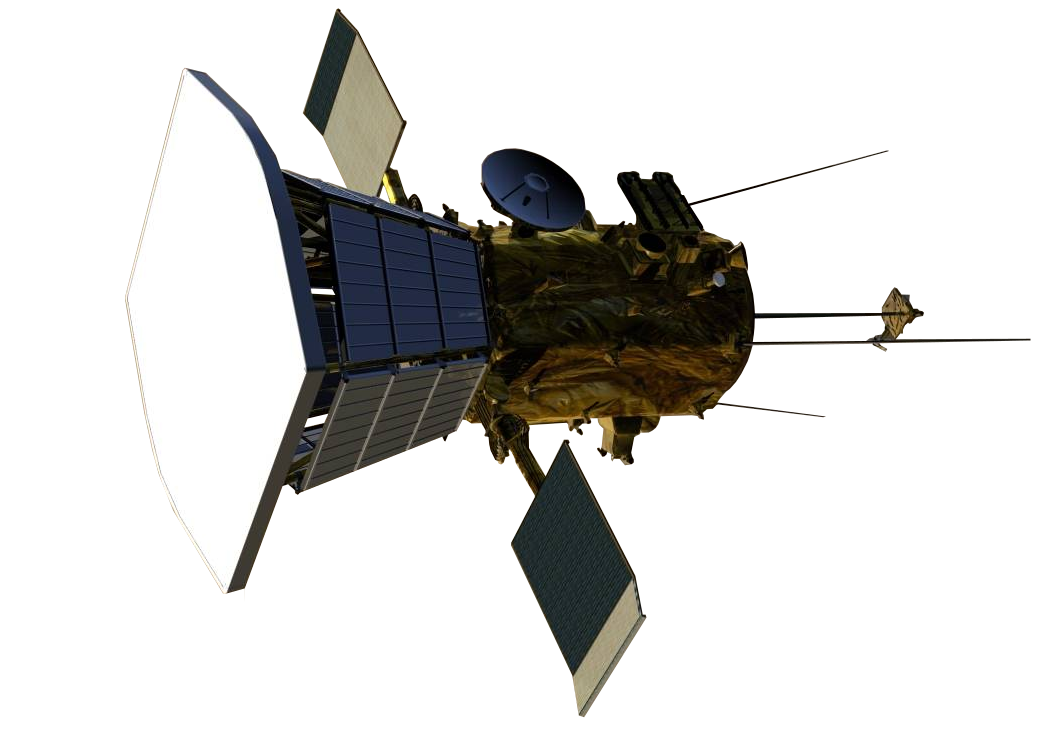Spacecraft Makes Progress on Solar Heating Mystery
The Sun’s surface temperature is around six thousand degrees kelvin, but the solar atmosphere—the corona and the solar wind—can reach a million degrees kelvin, a long-standing mystery in solar physics. Now, with data from the Parker Solar Probe, researchers have found evidence supporting a partial explanation for this mystery: magnetic waves driven by subsurface turbulence can impart energy to ions in these regions [1].
The exact mechanism of heating has been debated for decades, but the story appears to start with turbulent flow in the Sun’s convection zone, the outermost layer below the surface. In fluid dynamics, turbulence causes heating through a process known as turbulent energy cascade, where large eddies are converted into progressively smaller eddies. The energy in the smallest eddies is converted into heat through collisions between molecules.
Solar physicists think that a similar turbulent cascade happens in the Sun. Heat-driven turbulence below the surface disturbs the solar magnetic-field lines that extend into the corona, causing waves to propagate like the vibrations of a plucked guitar string. These long-wavelength, low-frequency magnetic waves travel into the corona and the solar wind, generating disordered waves at progressively shorter wavelengths. But the plasma of charged particles that constitutes the solar corona is not dense enough for collisions between particles to generate enough heat to explain the coronal temperature. Instead, something more exotic must be occurring.
One idea, called cyclotron resonant heating, is that the turbulent cascade generates waves that are short enough to be in resonance with the motion of ions in the corona. This resonance allows these waves to pump energy into the ions’ cyclotron motion—helical trajectories that spiral around magnetic-field lines. This energy boost heats the corona and the solar wind, which consists of particles that follow magnetic-field lines extending outward from the corona. There are several other proposed heating mechanisms, and it’s likely that more than one of them is in effect.
Some key past observations support the cyclotron-resonant heating model. For example, a large amount of the heating appears to affect ion motion perpendicular to the magnetic-field lines, so the cyclotron motion of ions would be a natural explanation. Although these previous observations provided tantalizing clues in favor of cyclotron resonant heating, there has not been direct evidence. NASA’s Parker Solar Probe (PSP) recently flew closer to the Sun’s surface than any previous spacecraft, and its mission was to provide data on the mechanisms that heat the corona and the solar wind (see the graphical explanation, Special Feature: To Touch the Sun, and Viewpoint: Momentous Crossing of a Solar Boundary). Trevor Bowen of the University of California, Berkeley, and his colleagues have now analyzed PSP data and found direct evidence of cyclotron resonant heating.
The team looked at the distribution of velocities of protons in a solar wind stream (a narrow jet that makes up a small part of the solar wind). They also studied the electric and magnetic fields of the waves that resonantly excite motion in the protons. From these measurements, they were able to deduce the rate at which the waves heat solar wind protons. They found that the heating rate was consistent with a property measured by previous probes: the extent to which turbulent energy at larger length scales cascades down to smaller scales. While previous observations indirectly supported the cyclotron resonant heating model, the PSP has now provided the first direct measurement of the heating, confirming that cyclotron waves indeed are responsible for a significant fraction of the heating in the corona and the solar wind.
“People have thought about this as a possible heating mechanism for so long that an actual demonstration that it’s occurring in the solar wind is important,” says Marco Velli, a plasma physicist at the University of California, Los Angeles. “But it’s a very difficult measurement to make,” he says. “It’s still not clear whether it’s the primary mechanism by which these ions are heated or not.”
Bowen agrees that cyclotron resonant heating is probably only one piece of the puzzle. He notes that the analysis focused on one stream of the solar wind with a specific set of parameters, and cyclotron resonance could play a different role in heating at other locations in the corona and the solar wind. “We’re still scratching the surface of the Parker data. It’s important to get started, but there’s going to be more coming out, for sure,” says Velli.
–Katie McCormick
Katie McCormick is a freelance science writer based in Sacramento, California.
References
- T. A. Bowen et al., “In situ signature of cyclotron resonant heating in the solar wind,” Phys. Rev. Lett. 129, 165101 (2022).






